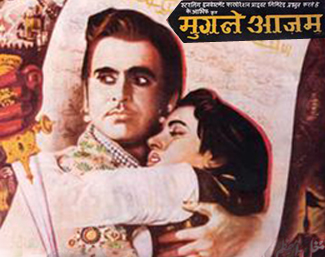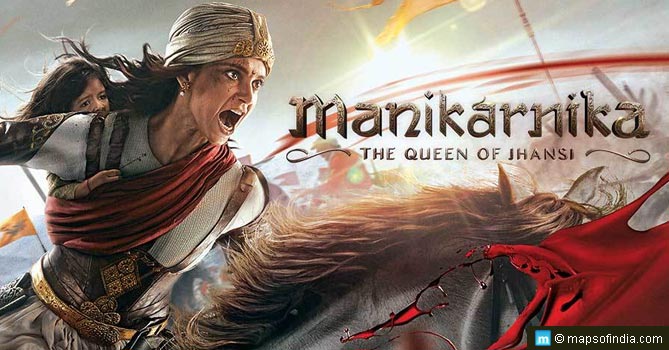Cast– Prithviraj Kapoor, Dilip Kumar, Madhubala
Crew– Directed by K.Asif, produced by Shapoorji Pallonji, music by Naushad
K. Asif’s magnum opus Mughal-E-Azam (meaning “the greatest of the Mughals”) tells a splendid saga, combining historical fact with fiction to present before the viewer a tale that has left thousands spellbound. A masterpiece in the true sense of the word, it took about 10 years to complete this great piece of art! The film revolves around Mughal Emperor Akbar banishing his spoilt son Prince Salim to fight for the expansion of their kingdom. Completing his exile of 14 years, Salim returns a good lad and resumes his duties as the Prince of Hindustan. However, things go for a toss as tell tale signs of romance start brewing between the Prince and Anarkali, a kaneez (servant). The movie henceforth is about two lovers lost in a reverie of irrevocable passion, unable to keep apart and struggling to be together.
The film’s primary mode of dialogue delivery is through the aristocratic language of Urdu. Its polished urbanity and poetic gestures take the viewer into a different realm of time, a time where shayari (poetry) was the highlight of musical evenings and shaan shauqat (splendor) exuded in the ways of the Mughals. Prithviraj Kapoor’s strong performance shapes the personality of Akbar the Great as a devout follower of rules and traditions. The charming Dilip Kumar does a wonderful job in playing the intense role of Prince Salim while Madhubala looks stunning in her role as the docile beauty, Anarkali.
Naushad’s music composition is simply enchanting. Legendary singers Lata Mangeshkar, Mohammed Rafi, Bade Ghulam Ali Khan and Shamshad Begum have lent their voices to the haunting melodies of the movie. Whether it be “Pyar kiya toh darna kya”, (perhaps the most popular song of the film), or “Teri mehfil mein” , Shakeel Badayuni’s soulful lyrics are bound to keep the audience enraptured. Mughal-e-Azam is said to be the most expensive film of its time. This is quite evident from the extravagant mahal (palace) of Shehanshah Akbar, the lavish jewellery and armor used. Mughal-e-Azam is thus, both a treat to the eyes and ears.
In 2004, the film (originally monochromatic) was revisited and released in colour. Thus, it is highly recommended that one views the colored version as it definitely makes the watching experience more enjoyable. Moreover, since the language is not easily comprehensible, I suggest a version with English subtitles.
To conclude, the opulence and grandeur of Mughal-e-Azam is worth watching!
Rating: *****






